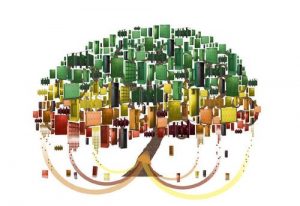Sustainability is one of the most common goals of every facility manager. The idea that you can implement some materials and designs that will not only stand the test of time, but greatly reduce any harmful output to our  environment is what managers, designers, and architects yearn for. However, why is sustainability so important to us in the commercial facility industry? There are several answers to this question, so we’re going to explore the many benefits of sustainability and how it can help commercial facilities thrive.
environment is what managers, designers, and architects yearn for. However, why is sustainability so important to us in the commercial facility industry? There are several answers to this question, so we’re going to explore the many benefits of sustainability and how it can help commercial facilities thrive.
The Importance of Sustainability
The overall goal of sustainability is to prevent the unnecessary depletion of our natural resources. While this may not seem like it has a correlation with your facility, it actually does. Given the various energy required to heat and light a facility, the amount of waste generated by a facility’s occupants, and the toxicity of certain cleaning products and chemicals that are used within a facility, it’s now more important than ever to make facilities and commercial buildings more sustainable. There are several ways you can set sustainable goals and achieve them. Here’s a few to help you get started:
Waste Reduction & Improved Recycling
One of the key principals of sustainability is to reduce waste and increase the ability to recycle. Since there’s finite space on the planet, there’s little room for waste. Unfortunately, we’ve got plenty of it to go around. By implementing a thorough recycling plan for your facility, you can cut a lot of disposal costs and you’ll reduce the amount of waste generated by the occupants in your facility. Properly recycling materials can actually reduce greenhouse gas emissions in our atmosphere.
Using Clean & Sustainable Energy
Installing solar panels on the roof of your facility has nothing but positive benefits. It significantly cuts costs on your energy bill because the energy that you’re using gets replenished every day. Depending on where your facility is located, local organizations often give incentives and tax breaks for businesses who utilize solar panels for clean and emission-free energy. Overall, solar panels pay for themselves within a matter of years, so you’re essentially cutting down on your operating costs.
Use Green Building Materials
Another way you can make your facility even more sustainable is by utilizing some green building products anywhere  you can. While bamboo and hemp may be sustainable materials that can be used to build a home, it doesn’t really hold sway in a commercial facility. However, recycled plastic, like HDPE (high-density polyethylene), can certainly be used inside your facility to help add to the sustainability efforts.
you can. While bamboo and hemp may be sustainable materials that can be used to build a home, it doesn’t really hold sway in a commercial facility. However, recycled plastic, like HDPE (high-density polyethylene), can certainly be used inside your facility to help add to the sustainability efforts.
HDPE solid plastic has been used in commercial facilities across the country as toilet partitions, storage compartments, and even lockers in schools. It’s a solid material that doesn’t scratch, rust, crack, or dent. It’s not absorbent, so moisture and mildew won’t wear it down. HDPE plastic is very low maintenance, so it only requires a little cleaning periodically. Above everything else, it can outlast other plastic materials on the market, so you’ll cut costs by not having to replace the product frequently.
There are plenty of benefits to trying to make your facility more sustainable. It not only helps you cut operational costs with your facility, but it can help reduce the harmful effects of emissions in the environment. Do you want to learn more about how to make your facility more sustainable? Check out this free eBook, Sustainable Building Products: How to Make Your Facility Eco-Friendly from Top to Bottom, from your friends at Scranton Products.

 still steps that can be taken to increase the sustainability of your facility. A major area that you can focus on is your facility’s restrooms. More importantly, replacing your standard partitions with a
still steps that can be taken to increase the sustainability of your facility. A major area that you can focus on is your facility’s restrooms. More importantly, replacing your standard partitions with a